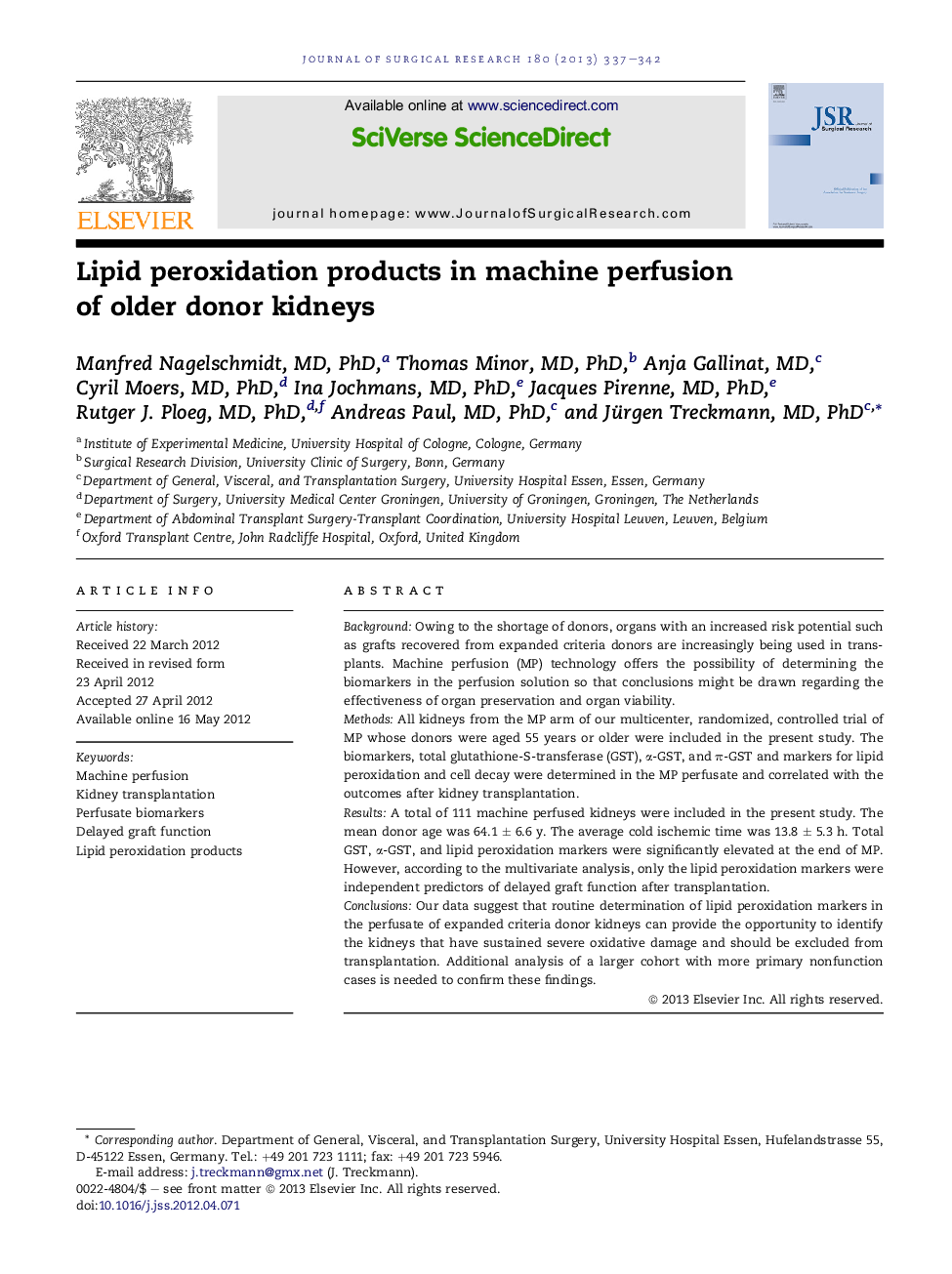| Article ID | Journal | Published Year | Pages | File Type |
|---|---|---|---|---|
| 4300995 | Journal of Surgical Research | 2013 | 6 Pages |
BackgroundOwing to the shortage of donors, organs with an increased risk potential such as grafts recovered from expanded criteria donors are increasingly being used in transplants. Machine perfusion (MP) technology offers the possibility of determining the biomarkers in the perfusion solution so that conclusions might be drawn regarding the effectiveness of organ preservation and organ viability.MethodsAll kidneys from the MP arm of our multicenter, randomized, controlled trial of MP whose donors were aged 55 years or older were included in the present study. The biomarkers, total glutathione-S-transferase (GST), α-GST, and π-GST and markers for lipid peroxidation and cell decay were determined in the MP perfusate and correlated with the outcomes after kidney transplantation.ResultsA total of 111 machine perfused kidneys were included in the present study. The mean donor age was 64.1 ± 6.6 y. The average cold ischemic time was 13.8 ± 5.3 h. Total GST, α-GST, and lipid peroxidation markers were significantly elevated at the end of MP. However, according to the multivariate analysis, only the lipid peroxidation markers were independent predictors of delayed graft function after transplantation.ConclusionsOur data suggest that routine determination of lipid peroxidation markers in the perfusate of expanded criteria donor kidneys can provide the opportunity to identify the kidneys that have sustained severe oxidative damage and should be excluded from transplantation. Additional analysis of a larger cohort with more primary nonfunction cases is needed to confirm these findings.
